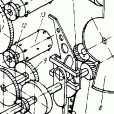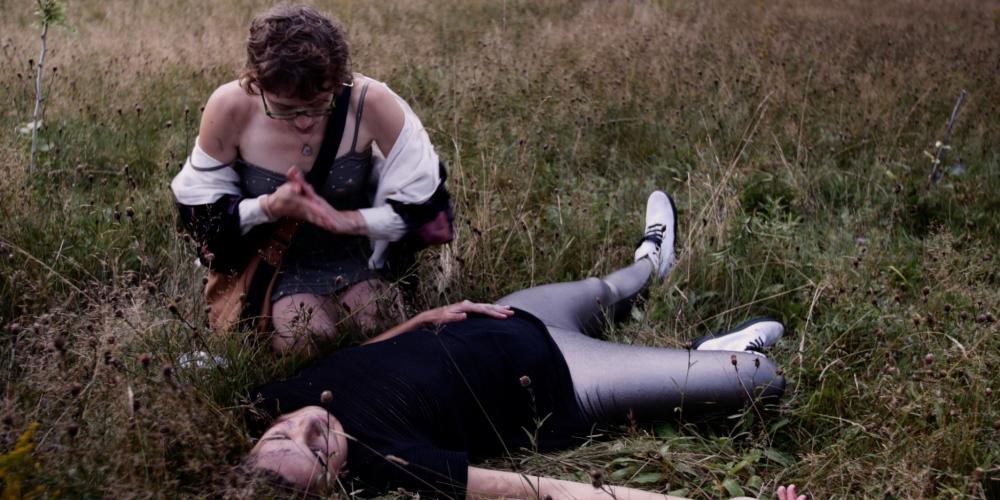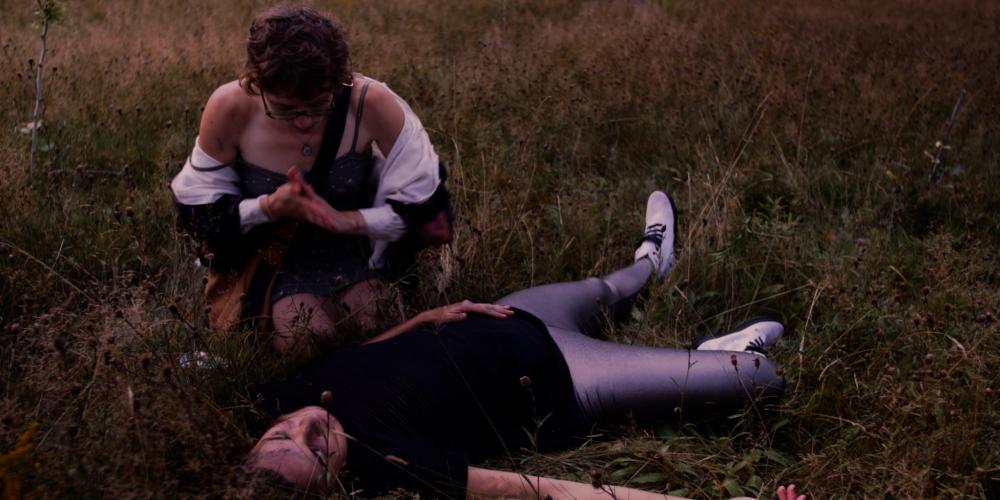-
Posts
69 -
Joined
-
Last visited
About studiodc

Profile Information
-
Gender
Not Telling
-
Location
Montréal, QC
-
My cameras and kit
GH4, GX85
Contact Methods
-
Website URL
http://vimeo.com/studiodc
Recent Profile Visitors
3,115 profile views
studiodc's Achievements

Member (2/5)
33
Reputation
-
 studiodc reacted to a post in a topic:
Camera resolution myths debunked
studiodc reacted to a post in a topic:
Camera resolution myths debunked
-
 studiodc reacted to a post in a topic:
Would You Perhaps Be Interested In A Different GX80/85 Colour Profile???
studiodc reacted to a post in a topic:
Would You Perhaps Be Interested In A Different GX80/85 Colour Profile???
-
 studiodc reacted to a post in a topic:
Would You Perhaps Be Interested In A Different GX80/85 Colour Profile???
studiodc reacted to a post in a topic:
Would You Perhaps Be Interested In A Different GX80/85 Colour Profile???
-
Yes. It works fine for me. I had to handshake twice. The second time it said "connected, encrypted" and that worked.
-
 studiodc reacted to a post in a topic:
What "style" of edit is this ?
studiodc reacted to a post in a topic:
What "style" of edit is this ?
-
 hyalinejim reacted to a post in a topic:
Would You Perhaps Be Interested In A Different GX80/85 Colour Profile???
hyalinejim reacted to a post in a topic:
Would You Perhaps Be Interested In A Different GX80/85 Colour Profile???
-
Absolutely fantastic. Thanks @BTM_Pix for the work to make this happen. It's proof that not only is the profile actually loaded in the camera but that it's quite a good one too. I'll be setting this and trying it out under some, er, "trying" conditions hopefully in the next week or so. @jonpais I have to say that while the Natural profile looks pretty darn good to me when exposure is set I'll definitely concede the point that Cinelike D appears to have higher DR. I'll have to poke at the actual bits to see if this is an actual new mapping of light to bit value or if it's because Cinelike D has a different contrast curve, because that's almost exactly what, to my eye, this looks like (speaking about DR or the appearance thereof, specifically). In other words, I'm curious as to whether the actual 255 maps to an actual higher EV of light, or if we just remap in between the same extremes we were already capturing. One would be increased DR (able to actually capture in a meaningful way brighter brights and darker darks in the same scene), the other would simply be playing with contrast and digital level mapping to give that appearance. Of course it's also curious as to whether Cine-D has different NR settings at higher ISO too...
-
 studiodc reacted to a post in a topic:
Would You Perhaps Be Interested In A Different GX80/85 Colour Profile???
studiodc reacted to a post in a topic:
Would You Perhaps Be Interested In A Different GX80/85 Colour Profile???
-
 studiodc reacted to a post in a topic:
Would You Perhaps Be Interested In A Different GX80/85 Colour Profile???
studiodc reacted to a post in a topic:
Would You Perhaps Be Interested In A Different GX80/85 Colour Profile???
-
 studiodc reacted to a post in a topic:
Would You Perhaps Be Interested In A Different GX80/85 Colour Profile???
studiodc reacted to a post in a topic:
Would You Perhaps Be Interested In A Different GX80/85 Colour Profile???
-
 studiodc reacted to a post in a topic:
Would You Perhaps Be Interested In A Different GX80/85 Colour Profile???
studiodc reacted to a post in a topic:
Would You Perhaps Be Interested In A Different GX80/85 Colour Profile???
-
 jase reacted to a post in a topic:
An adventure into the Panasonic GX85/80 begins - and a look at the Leica Nocticron for Micro Four Thirds
jase reacted to a post in a topic:
An adventure into the Panasonic GX85/80 begins - and a look at the Leica Nocticron for Micro Four Thirds
-
 Cinegain reacted to a post in a topic:
An adventure into the Panasonic GX85/80 begins - and a look at the Leica Nocticron for Micro Four Thirds
Cinegain reacted to a post in a topic:
An adventure into the Panasonic GX85/80 begins - and a look at the Leica Nocticron for Micro Four Thirds
-
 jonpais reacted to a post in a topic:
An adventure into the Panasonic GX85/80 begins - and a look at the Leica Nocticron for Micro Four Thirds
jonpais reacted to a post in a topic:
An adventure into the Panasonic GX85/80 begins - and a look at the Leica Nocticron for Micro Four Thirds
-
Just to be clear, I've got nothing against Cinelike D, when used properly. On my GH4, I preferred it to V-Log, at least with internal recording. The dynamic range is great. I did find, however, that in changing lighting conditions, it was non-linear with colour (especially skin tone) in a manner that made it very difficult to grade shots to match. Tracking white balance on a partially cloudy day with roving patches of daylight, for instance, either in manual mode or in AWB (I prefer not to shoot in AWB), just seemed to be smoother and easier to match when I didn't use Cinelike D, for instance. Since that's 90% of the stuff I'm using the GX85 for (and the G85 is already bulkier than I like), the lack of Cinelike D isn't a huge loss for me. That said, more options are better and it would be amazing if I could use the GX85 for more controlled shoots and get maximum quality out of it too.
-
Both Smallrig and Hondo Garage make a variety of rod adapters that function beautifully as a standoff for this sort of situation when you don't want to run the rods, and of course are useful for rods when you need 'em. I never liked the look on Cinelike D and found that shooting natural or standard, with a few modifications (actually quite similar to Jase) worked the best on the GH4 and still work fantastically on the GX85. Of course, I colour with either Colorista IV or Resolve, depending on the shoot, so that might have an effect on the ability to pull the grade out of the final image - colour maths really differ widely between apps and plugins. That plus a little Magic Bullet Denoiser III and you're good to go. I'll be picking up the professional Resolve 14 when it's on sale, no question, and checking out if it's denoise is as good. I like Denoiser III as much as what I've seen from Neat Video (and better, in some cases) but for sure it's FAST and does the job. I always liked a little grain in my images, and the GX85 actually has a fantastic noise structure - very fine and almost filmlike already, as long as you're not into the smudgy super-high-iso stuff where in-built NR kicks in.
-
 studiodc reacted to a post in a topic:
An adventure into the Panasonic GX85/80 begins - and a look at the Leica Nocticron for Micro Four Thirds
studiodc reacted to a post in a topic:
An adventure into the Panasonic GX85/80 begins - and a look at the Leica Nocticron for Micro Four Thirds
-

Hackers inject Mac virus into Handbrake Video Encoder
studiodc replied to Andrew Reid's topic in Cameras
Not to be pedantic but it's a Trojan, not a virus. It doesn't spread to other computers unless you download and manually give it admin permissions. That said it's still bad news! -
 Thpriest reacted to a post in a topic:
An adventure into the Panasonic GX85/80 begins - and a look at the Leica Nocticron for Micro Four Thirds
Thpriest reacted to a post in a topic:
An adventure into the Panasonic GX85/80 begins - and a look at the Leica Nocticron for Micro Four Thirds
-
What I think some people are missing is that there are three main modes of image stabilization. 1. The default "stabilization" is 5-axis IBIS - as in, physical mechanical movement of the sensor to compensate for unintended camera motion. 2. The "dual-IS" modes use the physical stabilization of the lens (usually 2-axis) plus additional stabilization of the sensor (usually the other 3) to accomplish the same thing, but because the lens handles some of those axes optically the correction can appear more natural. 3. E-stabilization is nothing more than applying something like 'warp stabilizer' to the footage coming off the sensor digitally, just in-camera. As a result, all of the issues with that sort of stabilization (including the crop and focus issues, if you're pulling very tight focus) are going to be present, because you aren't physically moving the sensor. This is true for all Panasonics with 5-axis IBIS in-body. Combining e-stabilization with physical stabilization is not usually a good idea, as it can introduce these artifacts. On the other hand, if you absolutely need the centre of your shot to be as steady as possible, combining the two may do that in some cases (but I can guess, though I don't have proof, that in some other cases it might make the problem worse). Usually the only time you really want e-stab is when you are turning OFF IBIS, e.g. because your lenses have a very small image circle and the IBIS exceeds that. In that case e-stabilization can be better than nothing, although honestly most of the post solutions are likely to be more effective and allow you the option of choice of stabilization method before baking the image into your file.
-
Actually the buzz from my pro photog friends is that Capture One Pro is the best Lightroom replacement (and better at pretty much everything). The raw processing there is astounding and it uses resolve-style colour wheels and HSL qualifiers for grading. Best colour workflow for photos that I've seen yet. I'm switching literally today, as version 10 has really impressed me in demo so far. So, I've found a replacement for everything except After Effects and I'm by no means a strong compositor - shoot, cut, and colour are my focus. As for graphic design and audio, I've already got great tools for those that suit my needs to a T. I've prepaid the year on Adobe so I'll let it run out, but I won't be funnelling any more money their way. Trapcode was tons of fun to play with, but honestly I get way more enjoyment for my hours just shooting and making simpler, more poignant things than trying to create sci-fi or alter reality too far. And, I'm a die hard FCPX fan too, but even with great plugins like Colorista IV, I still vastly prefer Resolve's workflow for colour, LUT, and image tweaking. If Resolve 14 edits anywhere near as well as FCPX does, I'll probably be starting some projects there just to see how it goes, rather than finishing only.
-
 kidzrevil reacted to a post in a topic:
Panasonic G85 review - is there any need to get an Olympus E-M1 Mark II for video?
kidzrevil reacted to a post in a topic:
Panasonic G85 review - is there any need to get an Olympus E-M1 Mark II for video?
-

EOSHD Pro Color for Panasonic (GH4, GX85, G85 + more)
studiodc replied to Andrew Reid's topic in Cameras
Yes, that's a deliberate part of the grade - warm glow look to the footage. It's easily cancelled but I was going to add it anyway to match the rest of the shots. Looks "pink" against a white website, but in context of the film your eye easily adjusts to the colour balance and it seems "warmly neutral" in context. Edit: Also, that's not a "guy". -

EOSHD Pro Color for Panasonic (GH4, GX85, G85 + more)
studiodc replied to Andrew Reid's topic in Cameras
Doing some wonderful things with the footage I've been working with. This is with the alternative LUT in place - could even out the exposure but I was going to grade it darker anyway, so this ended up perfect for my taste. I love the original colours but the LUT really put the feels on the grade. The before is what the grade would have looked like without starting from Andrew's LUT - so in both cases the artistic grade is kept constant. This way you see a more legitimate before/after of the LUT alone, without my edit being a factor. "Colour" me thrilled. P.S. the blacks are definitely NOT crushed - I just wanted a contrasty grade here. The LUT is doing it's job beautifully and I can pull TONS of shadow detail back out. -
 Cary Knoop reacted to a post in a topic:
GH5 Prototype
Cary Knoop reacted to a post in a topic:
GH5 Prototype
-
You can actually count to 10 bits (or much higher, even) with just your 10 fingers ! https://en.wikipedia.org/wiki/Finger_binary
-
 dbp reacted to a post in a topic:
GH5 Prototype
dbp reacted to a post in a topic:
GH5 Prototype
-
 IronFilm reacted to a post in a topic:
GH5 Prototype
IronFilm reacted to a post in a topic:
GH5 Prototype
-
 Kisaha reacted to a post in a topic:
GH5 Prototype
Kisaha reacted to a post in a topic:
GH5 Prototype
-
Can't say for the G85, and I just got my GX85, but on a 4K camera I never shoot in 1080p unless I need slomo and in that case it's not a big deal if it's a little soft as the slo-mo I shoot (unless I'm renting a seriously capable rig) is going to be for dreamy stuff anyway. If you plan to work in 1080p, do yourself a huge favour, shoot in 4K and use something like EditReady to transcode to 1080p ProRes as part of your ingest step (possibly applying Andrew's excellent LUTs at the same time). You'll end up with roughly equivalent to 4:4:4 colour and the downsampling will increase sharpness and decrease noise by a lot. You get basically 4x oversampled 1080p (2x horizontal, 2x vertical) for your trouble, and not horribly greater file sizes.
-
@mercer I think we're all in agreement that it exists, if in perception only. It may mean different things to different people. Personally, in the (admittedly unscientific) studies I've done on the subject, it's got to do with things like precise frame timing, proper frame exposure (there was a bug in the original C300 - not sure if it's still there, I haven't shot on that camera in a while - where footage shot as 24p would always have a 1/60 shutter speed, reducing motion blur from the expected 1/48 by enough that was noticeable - it made all the footage feel slightly less "smooth", for instance), and of course ensuring that playback was at a matching frame rate. For others, it's got more to do with colour, for others, bokeh or lack thereof, film grain or noise "feel", and the anamorphic effects, etc. etc. and of course any/all of these in combination. This subject has been beaten to death and we could still talk about it, but I think it really comes down to how you, personally, define it, and whether or not you can, in post, create that effect or if it's purely the result of the in-camera hardware and encoding. That said, I'd argue you could make stuff that very nearly everyone except a small percentage of other filmmakers finds entirely "cinematic" or "filmic" with nearly any decent video-capable camera these days, and that it's not as much of a hardware thing as people think. Can you do it on all cameras, straight off the card, in available light? Not easily, and certainly not with as much success. My personal perspective on the whole thing is that we've failed to carry forward actual cinema production technique and style and values. The importance of lighting and light modifiers. The use of colour for symbolism and message. The practice of motion. The importance of DOF (not low-DOF) and when/how to use it. Traditional framing versus unconventional. The language of editing. The incredible contributions of the art dept. (even if it's just one person) and wardrobe/makeup. Having a good colourist. To me, these contribute FAR FAR more to the feeling of "cinematic" or "filmic" than any of the gear you shoot with or what LUTs you slap on the footage, and my own eyes, in blind viewings, have held that up so far.
-
This is true, but the monitor refresh rate doesn't change just because you're playing a video on it. The refresh rate stays high (60-120hz, variable depending on settings, card, etc...) and the video is displayed at the closest frame interval that matches. You have to be using custom hardware out (like a BlackMagic mini monitor or other dedicated video apparatus, or set your video card's output explicitly) to drive a monitor at a dedicated refresh rate that matches the frame rate of your project. So, yes, if you're doing that and you set the output of that device to a matching frame rate, the monitor will adjust, absolutely. But if you're viewing it in, say, the preview or fullscreen window of Premiere on your standard desktop monitor, it doesn't change the refresh rate of your monitor to match, it applies pulldown and/or frame blending rate conversion to match the current monitor refresh rate of that display. This keeps your UI working smoothly while video of differing frame rates plays back. Play a 24p and a 30p video side by side on your display and watch, it's quite obvious.
-
I can definitely understand what you're talking about - but that's not something I would at all class as "motion cadence", which to me implies a) regularity in frame exposure duration and b) regularity in frame exposure timing. Judder is a big factor here - the playback interpolation of frames during 24p -> 60p telecine pulldown to match most modern monitor refresh rates makes a far bigger difference in the viewer's perception. For instance, when shooting GH4 footage at 30p it will often be described by clients as more "cinematic" when in fact, they are discussing video shown on monitors versus what they see in projected 24p theatres. So, there's a big perception difference in frame rates, pulldown effects, and frame timing (which is provably inaccurate on some cameras at certain frame rates), all of which I would classify into perceived motion cadence issues. The "quantized in-frame capture" you mention on the other hand... that's odd. I'd noticed it before on some footage (can't remember which camera) and wrote it off to perhaps the lighting in the studio (60hz AC versus 23.97p) doing something a bit funky, but now that you mention it outdoors, I'll have to comb through the footage again. This said, I can't say that would make a significant difference in "motion" perception, although perhaps if it's randomized frame to frame instead of consistent it could lead to a flicker effect. But of course I've seen 35mm film in fast pans or fast cross-frame motion "flicker" too, thanks to our inherent perception of the motion differences versus blur in those large-delta situations, so it's entirely possible. Then again, I did a lot of my GH4 recording externally direct to ProRes... might make a difference. Edit: thinking about it: are you sure this isn't including telecine effects of frame interpolation? It sure as hell looks like it, some modern telecine implementations (in FCPX, for instance) frame blend instead of just blandly repeating...
-
Agreed, I'm curious too. The GH4 has always had a very filmic motion cadence in 24p 4K if you ask me, and I've been crew and DIT on productions with Alexas and C300.







